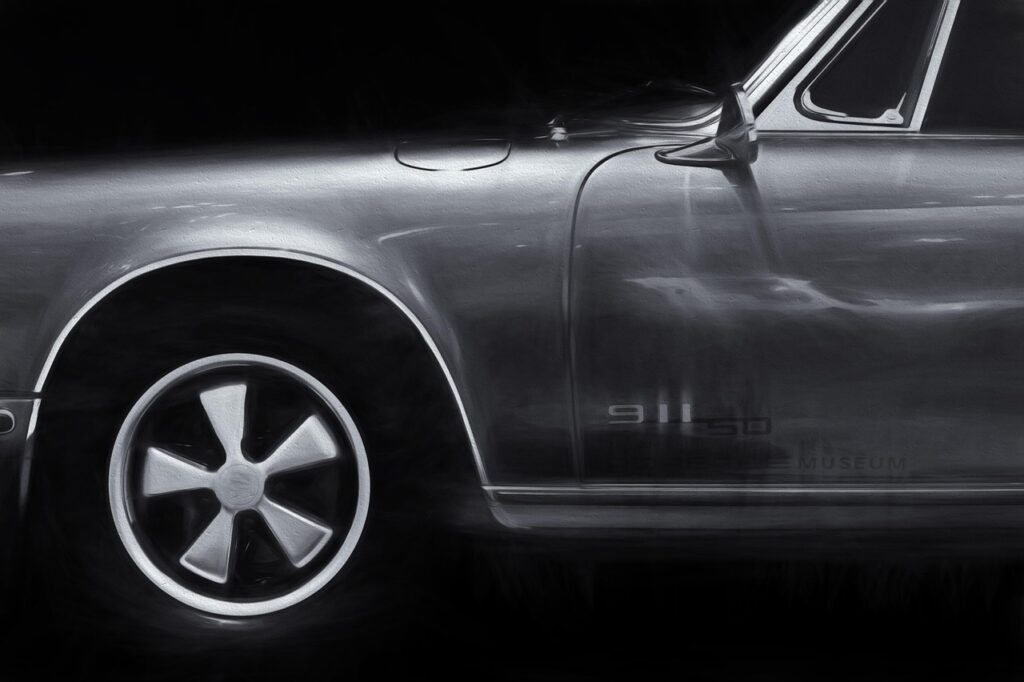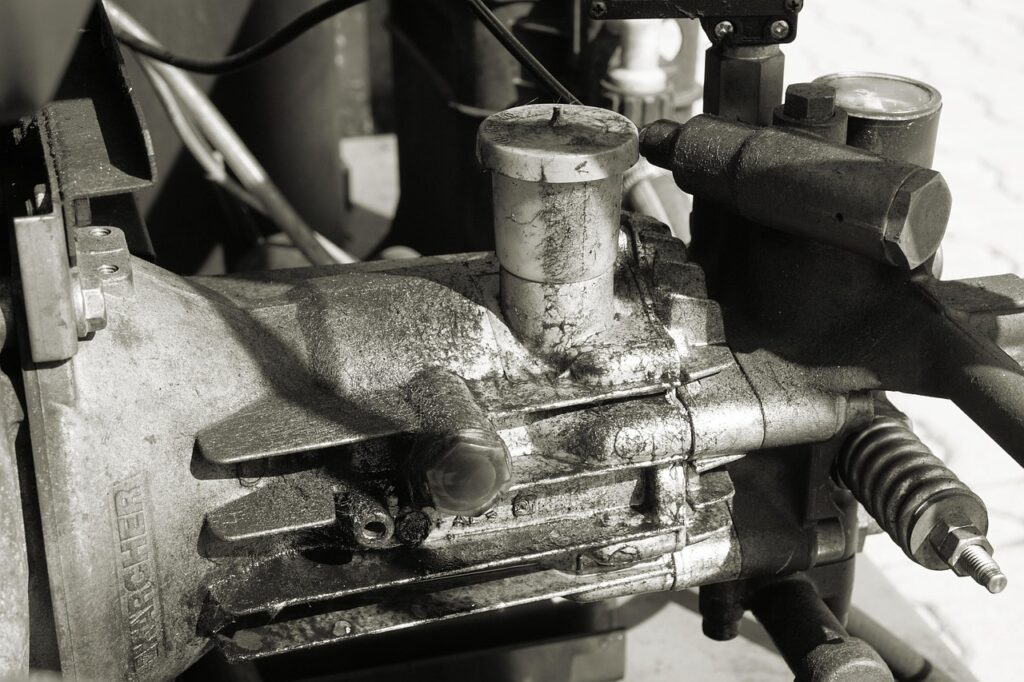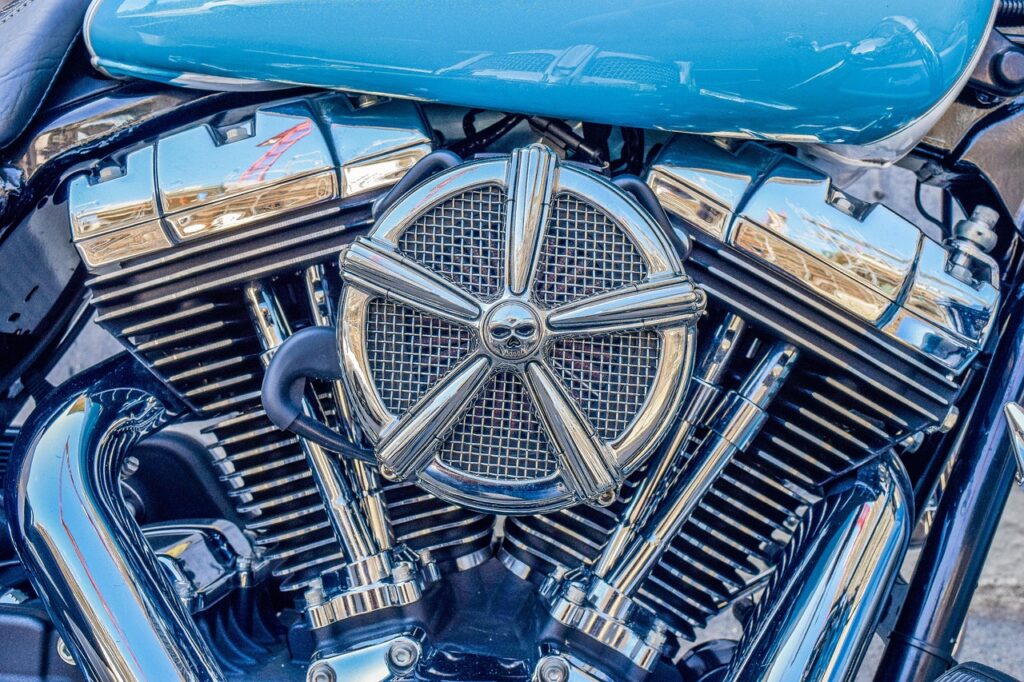Car ownership, while offering unparalleled freedom and convenience, comes with an often-unseen companion: the inevitable cost of maintenance and, sometimes, unexpected repairs. Many drivers focus heavily on the initial purchase price, only to be blindsided by the financial impact of keeping their vehicle on the road. Some of these repairs can be so expensive, they might even rival the cost of your original down payment, leading to significant financial strain.
The good news for every car owner, however, is that a vast majority of these high-cost fixes are entirely avoidable. With a proactive approach to vehicle care, a keen eye for warning signs, and a commitment to regular maintenance, you can save yourself thousands of dollars and significantly extend the lifespan of your vehicle. Understanding the most common culprits behind hefty repair bills is the first crucial step in this preventative journey.
In this in-depth guide, we’ll peel back the layers on 14 of the most expensive car repairs you might encounter, detailing not just what they are and why they cost so much, but critically, what you can do to prevent them. Our goal is to equip you with the knowledge needed to make informed decisions, minimize your out-of-pocket expenses, and ensure your car runs smoothly for years to come. Let’s delve into the mechanics of costly repairs and discover how smart ownership can be your best defense.
1. **Engine Replacement**
Your car’s engine stands as a complex marvel of engineering, serving as the heart of your vehicle’s operation. When this intricate machine suffers a catastrophic failure, owners are often left with no viable choice but to consider a complete engine replacement. This can easily become one of the most financially devastating repairs a car owner faces, often exceeding the perceived value of older vehicles.
The overall cost associated with an engine replacement is not fixed; it fluctuates significantly based on several critical factors. The specific make and model of your car plays a huge role, as does your decision between opting for a brand-new engine from the manufacturer or a more budget-friendly rebuilt alternative. For many owners of older cars, the sheer expense of a new engine makes the tough financial decision of whether to repair or replace the entire vehicle a very real dilemma.
Avoiding this ultimate repair hinges on a commitment to consistent preventative maintenance. Regular oil changes are paramount, as fresh, clean oil is vital for reducing friction and wear within the engine’s many moving parts. Promptly addressing any instances of overheating is also critical, as excessive heat can warp components and lead to irreversible damage. Beyond these, paying close attention to minor engine issues as they arise can prevent them from escalating into catastrophic failures, saving you immense costs down the road.
It’s also essential to be vigilant for any early warning signs that your engine might be struggling. Strange knocking noises, an unusual amount of excessive exhaust smoke, or a noticeable loss of power are all red flags that should never be ignored. Addressing these symptoms immediately with a qualified mechanic can often pinpoint problems before they become severe. Furthermore, using high-quality oil and fuel, diligently replacing spark plugs and air filters as recommended, and ensuring the proper functioning of your cooling system are all proactive measures that collectively reduce wear and tear on the engine, helping to safeguard it from premature failure.
Read more about: 15 Classic Cars You Might Want To Skip: An Expert Guide for Discerning Collectors
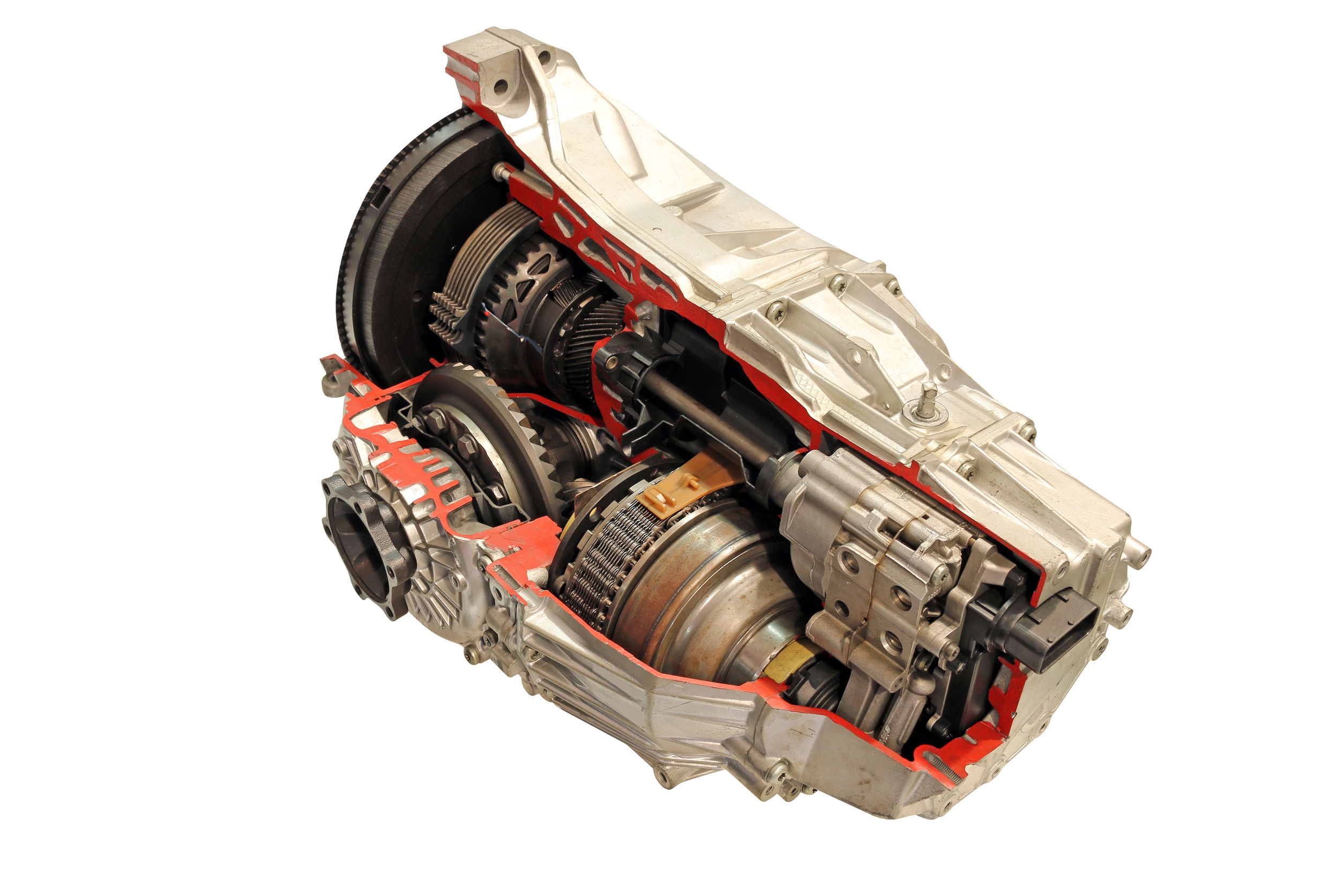
2. **Transmission Replacement**
Among the most formidable financial burdens a car owner can face is the replacement of a vehicle’s transmission. This sophisticated system is tasked with a crucial job: transferring power seamlessly from the engine to the wheels, enabling your car to move and change speeds efficiently. When the transmission falters, the entire driving experience can become erratic, unreliable, and potentially dangerous.
Detecting early signs of transmission trouble is vital, as ignoring them can lead to much more expensive repairs or a complete replacement. Drivers should be attentive to symptoms such as gears slipping unexpectedly, the presence of strange grinding or whirring noises originating from the transmission, or any difficulty experienced when shifting between gears. These indicators often serve as clear signals that the transmission system is beginning to fail.
The inherent complexity of the transmission system contributes significantly to the high cost of replacement. It’s not merely about the expense of the specialized parts themselves, which can be substantial, but also the high labor costs associated with the intricate and time-consuming process of removing and installing a new unit. However, catching transmission issues in their nascent stages can sometimes allow for more affordable, targeted repairs rather than a full system overhaul.
To proactively avoid the steep cost of a transmission replacement, several preventative measures are highly recommended. Regularly checking and changing your transmission fluid according to your vehicle manufacturer’s guidelines is paramount, as clean fluid ensures proper lubrication and cooling. Adopting a smoother, less aggressive driving style can also reduce strain on the transmission. Critically, if you observe even minor transmission slips or notice any leaks of transmission fluid, it’s imperative to have them inspected immediately, as these are often precursors to more severe damage. Additionally, allowing your car to warm up adequately before driving in colder weather and avoiding excessive towing loads can substantially extend the operational life of your transmission.
Read more about: 15 Classic Cars You Might Want To Skip: An Expert Guide for Discerning Collectors

3. **Timing Belt Replacement**
The timing belt, while often out of sight, plays an absolutely critical role in the synchronized operation of your engine. It’s a precisely engineered component that ensures the valves open and close at precisely the right time in relation to the pistons’ movement. A worn-out or, worse, a broken timing belt, can precipitate truly catastrophic engine damage, making its timely replacement a non-negotiable aspect of vehicle maintenance.
When a timing belt fails, the consequences can be dire. If the belt snaps while the engine is running, the pistons can collide violently with the valves. This collision can bend valves, damage pistons, and even crack cylinder heads, leading to extensive and incredibly expensive engine repair work—often necessitating a full engine rebuild or replacement. This is why vigilance regarding its condition is so crucial.
The cost associated with replacing a timing belt typically falls within a range of $1,000 to $2,500, though this can vary depending on your specific vehicle’s make and model. This cost includes both the part itself and the significant labor involved, as accessing the timing belt often requires dismantling other engine components. Given the potential for devastating engine damage, this expense pales in comparison to the repair bill that a broken belt would incur.
The most effective strategy to avoid timing belt failure is to adhere strictly to your vehicle’s manufacturer-recommended replacement schedule. Most manufacturers advise replacing the timing belt every 60,000 to 100,000 miles, irrespective of whether there are visible signs of wear. It’s imperative not to wait for signs of trouble, as timing belts are notorious for failing suddenly and without prior warning. For vehicles equipped with a timing chain rather than a belt, regular oil changes become even more critical, as timing chains rely heavily on proper lubrication to prevent premature wear and ensure their longevity.
Read more about: Beyond the Quarter-Million Mark: Our Shortlist of Cars Engineered for Extreme Longevity
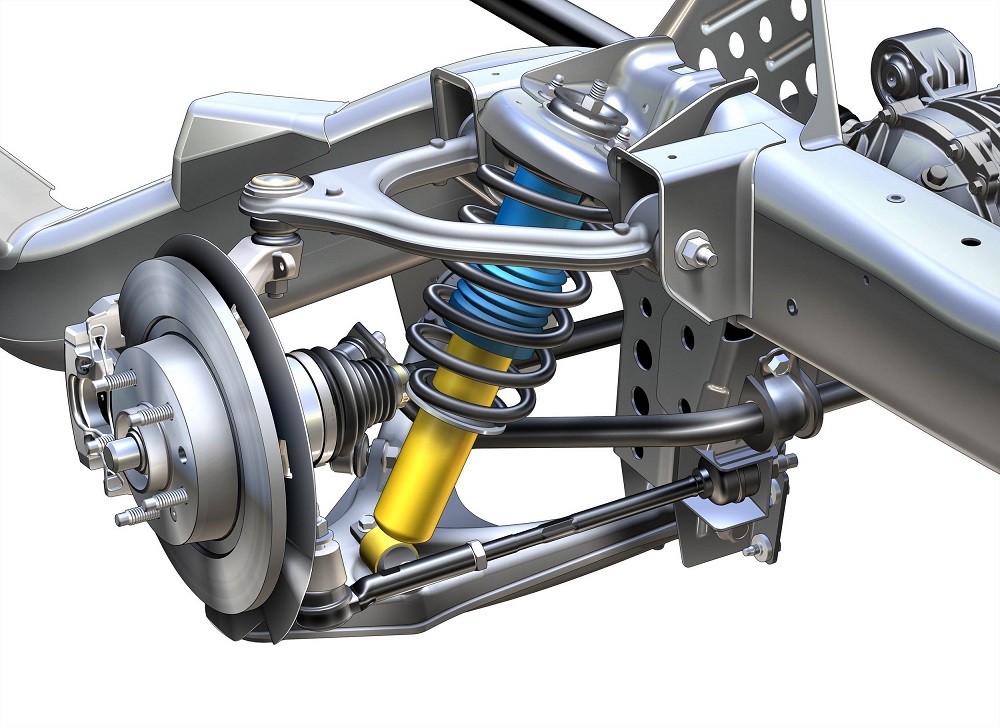
4. **Suspension System Repair**
Your car’s suspension system is far more than just a comfort feature; it’s a vital network of components designed to ensure a smooth, stable, and controlled ride. Comprising shocks, struts, springs, and various linkages, this system absorbs road imperfections, maintains tire contact with the road, and helps you control the vehicle. However, like all mechanical parts, suspension components are subject to wear and tear over time.
The continuous stress from regular driving, particularly on poor road conditions riddled with potholes and uneven surfaces, takes its toll on the suspension. The constant weight of the vehicle and its occupants also contributes to the gradual degradation of these components. Eventually, shocks lose their damping ability, springs can sag, and bushings can deteriorate, leading to a compromised ride quality and handling.
Signs of suspension failure are often quite noticeable to a vigilant driver. You might experience a significantly rougher ride, where every bump feels exaggerated. Unusual noises, such as clunking or creaking sounds, especially when going over bumps or turning, are also strong indicators. Furthermore, difficulty controlling the car, excessive body roll during turns, or a feeling of looseness in the steering can signal suspension issues. Ignoring these symptoms is ill-advised, as doing so can lead to further damage not just to the suspension itself, but potentially to tires and other interconnected systems, ultimately resulting in even more expensive repairs.
The costs associated with suspension repairs can vary quite widely, reflecting the range of potential issues. Minor fixes might only set you back a few hundred dollars, for instance, if only a single worn bushing needs replacement. However, if the damage is more extensive or requires a full suspension overhaul, including multiple components like all four shocks/struts and springs, the bill can easily climb to $5,000 or even higher. This wide variance underscores the importance of addressing issues early.
To minimize the need for costly suspension system repairs, several preventative actions are beneficial. Whenever possible, make a conscious effort to avoid potholes and other severe road hazards, as these can deliver sudden, impactful blows to your suspension. Replacing worn shocks and struts as needed is crucial, as they directly affect ride quality and control. Additionally, having your suspension system inspected regularly by a mechanic can help catch early signs of wear before they escalate into major problems. Keeping your tires properly inflated to the recommended pressure and rotating them as scheduled can also help to distribute wear evenly and reduce undue stress on the suspension components, contributing to their longevity.
Read more about: 15 Classic Cars You Might Want To Skip: An Expert Guide for Discerning Collectors
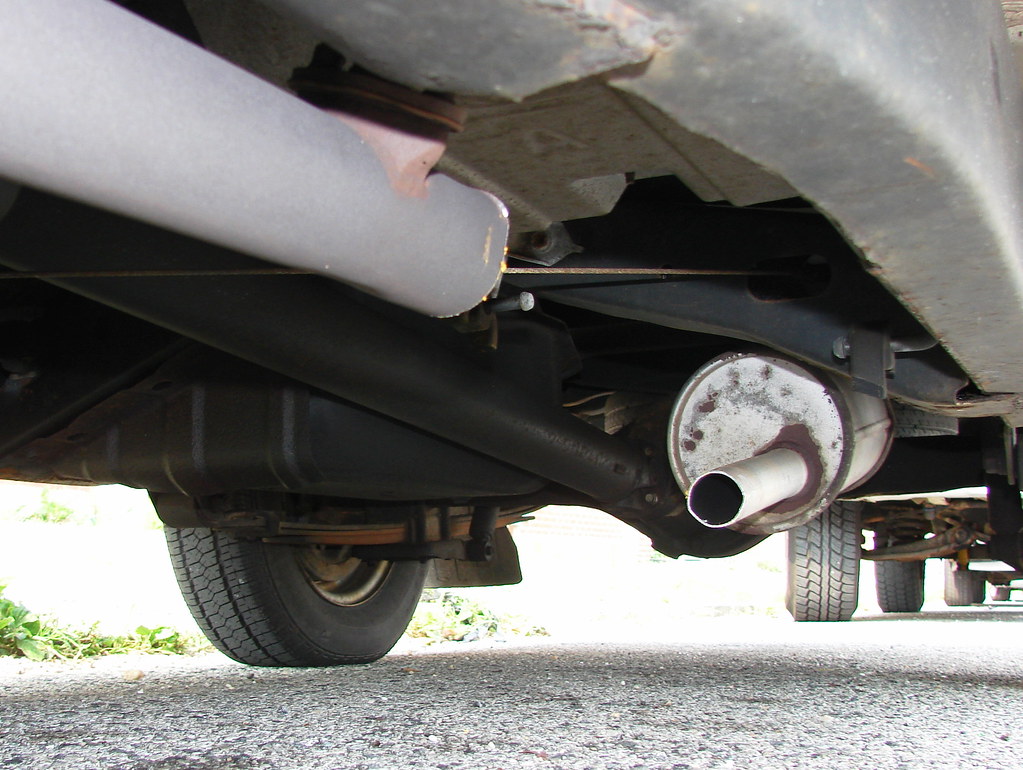
5. **Catalytic Converter Replacement**
Nestled within your car’s exhaust system, the catalytic converter performs an indispensable environmental function: it converts harmful gases produced by the engine, such as carbon monoxide, nitrogen oxides, and unburnt hydrocarbons, into less harmful emissions like carbon dioxide, nitrogen, and water vapor. This critical component plays a vital role in meeting emission standards and reducing your vehicle’s environmental footprint.
Unfortunately, replacing a catalytic converter is a significant financial outlay, typically costing between $1,000 and $3,000. This high cost is primarily due to the precious metals contained within its structure—specifically platinum, palladium, and rhodium. These rare and valuable metals act as catalysts, facilitating the chemical reactions that clean the exhaust gases. The increasing market value of these materials directly inflates the replacement cost of the converter itself.
Beyond natural wear and tear or damage from engine issues, catalytic converters have become a prime target for theft. Organized criminals are acutely aware of the valuable metals inside and can quickly cut a converter from a vehicle, especially trucks and SUVs, which offer easier access. This makes catalytic converter theft a frustrating and costly problem for many car owners, adding an unexpected dimension to potential repair expenses.
To safeguard against the high cost of catalytic converter replacement, especially from theft, proactive measures are key. Parking your vehicle in well-lit areas or, even better, in a locked garage, significantly reduces the risk of theft. Maintaining regular exhaust system inspections during routine service can help identify any issues with the converter early on, potentially allowing for less expensive repairs before a full replacement is needed. Furthermore, considering the installation of a catalytic converter shield or having your Vehicle Identification Number (VIN) engraved onto the part can act as a deterrent to thieves, making the stolen component harder to sell.
Preventing issues from carbon buildup is also important for the converter’s health. Frequent short trips, where the engine doesn’t reach optimal operating temperature for long, can lead to carbon deposits accumulating inside the catalytic converter. Occasionally, driving on the highway at higher speeds for an extended period helps to burn off these deposits, keeping the converter functioning properly and efficiently, thereby prolonging its life.
Read more about: Mechanics’ Top Frustrations: 14 Bad Car Habits You Need to Stop Now to Save Money and Your Vehicle’s Life
6. **Air Conditioning Compressor Repair**
When the sweltering heat of summer arrives, a functional air conditioning system in your car is not just a luxury but a necessity for comfort and safety. If your car’s A/C suddenly stops blowing cold air, or stops working altogether, the air conditioning compressor is frequently the culprit. This vital component, often costing between $500 and $2,500 to replace, is responsible for circulating refrigerant throughout the entire A/C system, creating that much-needed cool air within your vehicle’s cabin.
The compressor acts as a pump, pressurizing the refrigerant so it can absorb heat from the cabin and release it outside. Without a working compressor, the entire A/C cycle is broken, rendering your air conditioning system completely ineffective. This means you’ll be left with warm air blowing from the vents, or no airflow at all, making for an uncomfortable driving experience in warm weather.
There are several early indicators that your A/C compressor might be on its way out, and recognizing them can help you address the problem before it completely fails. You might notice that the airflow from your vents feels weaker than usual, or that the air blowing out is not as cold as it used to be. A more distinct warning sign is the presence of loud grinding, whining, or clunking noises emanating from the engine bay when your air conditioning system is engaged, signaling internal mechanical wear within the compressor itself.
To proactively avoid the significant expense of air conditioning compressor repairs, some simple maintenance habits can make a big difference. One effective strategy is to run your A/C system regularly, even during colder months. This practice helps to keep the internal seals and components lubricated, preventing them from drying out and cracking, which can lead to premature compressor failure. Sporadic use allows the system to remain in good working order throughout the year.
During your routine vehicle maintenance, it’s also wise to have your refrigerant levels checked by a technician. Low refrigerant levels can force the compressor to work harder than necessary, putting undue strain on the unit and accelerating its wear. Additionally, regularly replacing your cabin air filter plays a role in maintaining optimal airflow and reducing the workload on the compressor, as a clogged filter can restrict air intake and make the system less efficient. These small steps can significantly extend the life of your A/C compressor and save you a substantial repair bill.
Read more about: From Keys to Cassettes: 14 Once-Loved Car Features That Are Now Relics of the Past
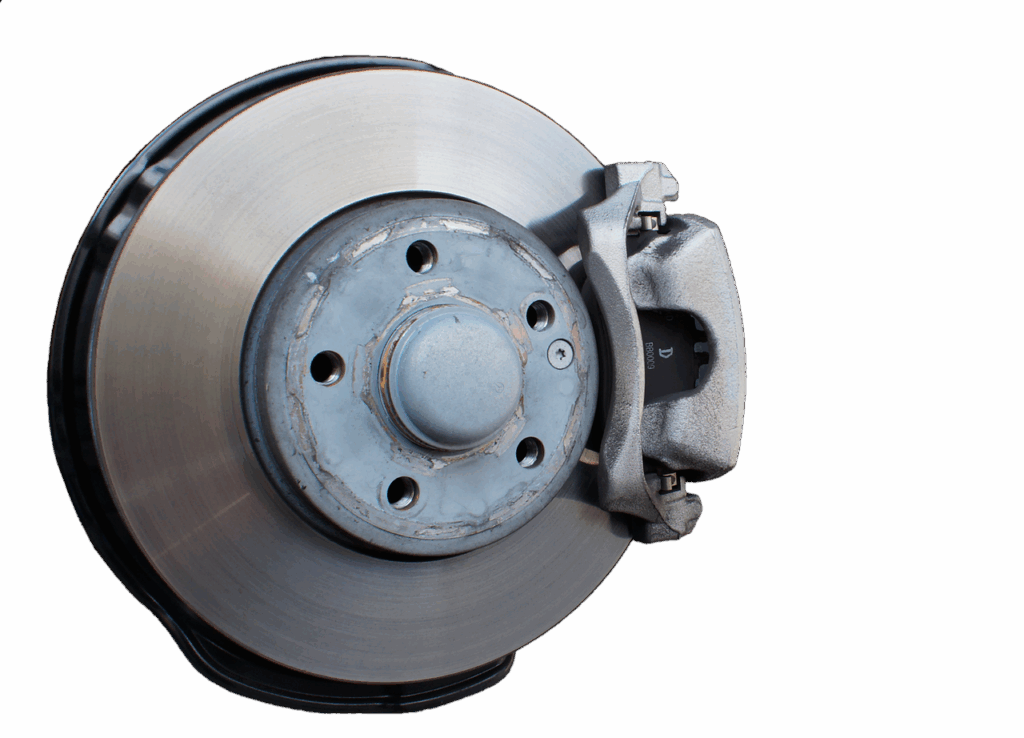
7. **Brake System Repair**
Few systems in your car are as absolutely critical for your safety as the braking system. It is your primary defense against collisions and ensures you can control your vehicle’s speed and bring it to a complete stop reliably. When this intricate system begins to show signs of failure, it not only compromises your safety but can also lead to a substantial and often unexpected repair bill, impacting your financial peace of mind.
The braking system comprises numerous interconnected components, including rotors, pads, calipers, brake lines, and the master cylinder, all working in unison to generate the friction needed to slow and stop your car. Over time, these parts naturally wear down, especially the brake pads and rotors, which are consumables designed to be replaced. However, issues can also arise with calipers sticking, brake lines leaking, or the master cylinder failing, each posing significant safety risks and driving up repair costs.
Replacing key components within the braking system, such as all four rotors and pads, or addressing more severe issues like caliper or master cylinder failure, can easily cost anywhere from $1,000 to $4,000. The exact price depends heavily on the extent of the damage, the specific parts required, and the make and model of your vehicle. Ignoring early warning signs will almost certainly lead to more extensive damage and a higher repair expense down the line, as worn components put added stress on others.
To effectively avoid the high costs associated with major brake system repairs, proactive maintenance and attentive driving habits are paramount. It is crucial to replace your brake pads before they wear down completely to the metal backing. Once metal-on-metal contact occurs, it quickly damages the rotors, turning a simple pad replacement into a much more expensive pads-and-rotors job. Periodically flushing the brake fluid is another essential step; old, contaminated fluid can cause corrosion within the brake lines and calipers, compromising performance and leading to premature component failure.
If you start to hear persistent squeaking, grinding, or a pulsating sensation when you apply the brakes, do not delay in having the system inspected. These are classic warning signs of brake wear or malfunction that, if addressed immediately, can prevent more costly repairs. Additionally, adopting smarter driving techniques, such as avoiding riding the brakes unnecessarily on downhill slopes or in heavy traffic, is beneficial. Excessive and prolonged braking generates intense heat, which can prematurely wear down pads, warp rotors, and stress calipers, all contributing to an earlier need for expensive repairs. Regular inspections and timely attention to these issues are key to maintaining a safe and cost-effective braking system.
Read more about: 15 Classic Cars You Might Want To Skip: An Expert Guide for Discerning Collectors

8. **Fuel Injector Replacement**
Fuel injectors play a critical role in your engine’s combustion process, precisely atomizing and delivering fuel into the cylinders. When these vital components fail, the consequences can be costly, with replacement typically ranging from $1,000 to $2,000. Malfunctioning injectors can manifest as rough idling, engine misfires, and a noticeable decrease in fuel efficiency, signaling that your engine isn’t getting the precise fuel delivery it needs for optimal performance.
Over time, several factors can lead to fuel injector failure. Ethanol, commonly found in gasoline, can cause deposits to build up, as can carbon residues from lower-quality fuels. These accumulations can clog the fine nozzles of the injectors, restricting fuel flow and compromising their spray pattern. This reduced efficiency not only harms performance but can also place undue strain on other engine components as the system tries to compensate for improper combustion.
To proactively avoid the significant expense of fuel injector replacement, several preventative steps are highly recommended. Consistently using high-quality fuel is a fundamental practice, as it minimizes the accumulation of harmful deposits. Incorporating fuel injector cleaners into your maintenance routine periodically can also help dissolve existing buildup, keeping the injectors clear and functional. Furthermore, diligently replacing your fuel filter as recommended by your vehicle’s manufacturer is crucial, as a clean filter prevents contaminants from reaching and clogging the delicate injectors in the first place.
Another often-overlooked tip is to avoid habitually running your fuel tank too low. The bottom of the fuel tank can accumulate sediment and debris over time, and frequently operating on low fuel increases the likelihood of these contaminants being drawn into the fuel system and potentially clogging the injectors. By maintaining a sensible fuel level and adhering to these preventative measures, you can significantly extend the lifespan of your fuel injectors and safeguard against costly repairs.
Read more about: Buyer Warning: 9 Sports Cars That Become Reliability Nightmares Before 50,000 Miles
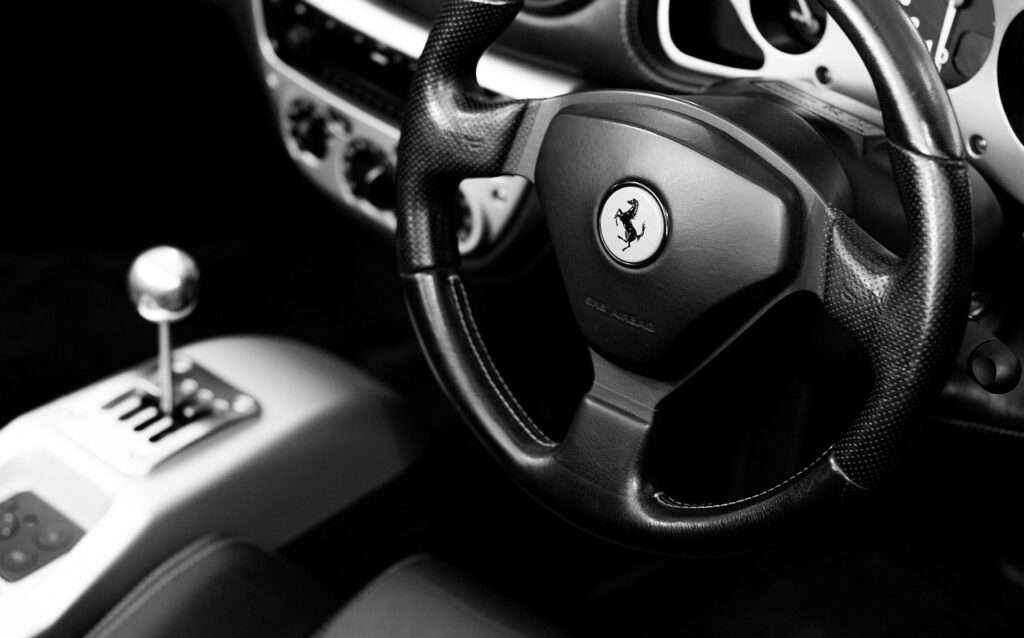
9. **Power Steering Pump Replacement**
The power steering pump is a fundamental component designed to reduce the effort required to turn your steering wheel, making maneuvering your vehicle a smooth and effortless experience. When this pump begins to fail, the steering can become exceptionally difficult, compromising both driving comfort and safety. Replacing a power steering pump typically costs between $500 and $1,500, varying based on your car’s specific make and model.
Early detection of power steering issues is key to preventing more severe and costly damage. A common symptom of a failing pump is a distinct whining noise, often heard when turning the steering wheel, particularly at lower speeds or when the vehicle is stationary. Another critical warning sign is difficulty in steering, where the wheel feels unusually heavy or resistant to turning, indicating that the hydraulic assist is either diminished or absent. Ignoring these signals can lead to complete pump failure and potentially damage other interconnected steering components.
To effectively avoid the expense of power steering pump replacement, regular attention to your power steering system is essential. It is crucial to check your power steering fluid levels periodically, ensuring they are within the manufacturer’s recommended range, and to top up the fluid as needed. Equally important is promptly addressing any leaks of power steering fluid as soon as they are noticed, as leaks can lead to insufficient fluid levels, causing the pump to run dry and suffer premature wear or catastrophic failure.
Additionally, adopting certain driving habits can help prolong the life of your power steering pump. A lesser-known tip is to avoid frequently turning the steering wheel to its absolute maximum lock position and holding it there for extended periods. This action places excessive strain on the pump and can accelerate its wear. By incorporating these straightforward preventative measures and promptly addressing any warning signs, you can help maintain the integrity of your power steering system and avert a significant repair bill.
Read more about: Mechanics’ Top Frustrations: 14 Bad Car Habits You Need to Stop Now to Save Money and Your Vehicle’s Life
10. **Differential Repair**
The differential is an indispensable part of your car’s drivetrain, acting as a crucial gearbox that allows your wheels to rotate at different speeds, particularly vital when navigating turns. Without a properly functioning differential, your vehicle’s handling would be severely compromised, leading to wheel slippage and unstable cornering. When this complex component fails, repairs can be quite costly, often ranging from $1,000 to $4,000, depending on the severity of the damage and your vehicle type.
Identifying signs of differential issues early can make a substantial difference in the ultimate repair cost. Drivers should be vigilant for specific symptoms, such as grinding or clunking noises that emanate from the rear of the vehicle, especially when making turns. Additionally, experiencing unusual vibrations, a feeling of looseness in the driveline, or a noticeable deterioration in your car’s handling can all point to problems within the differential. Prompt investigation of these indicators is critical to prevent the damage from escalating.
Routine maintenance focused on the differential fluid is the primary way to avoid extensive and expensive repairs. Just like engine oil or transmission fluid, differential fluid needs to be checked and changed periodically according to your vehicle manufacturer’s specifications. This fluid lubricates the gears and bearings within the differential, and old, contaminated, or low fluid levels can lead to excessive friction, heat buildup, and premature wear of the internal components, ultimately resulting in costly internal damage.
Furthermore, modifying your driving habits can also contribute to the longevity of your differential. Avoiding sudden, aggressive accelerations and minimizing excessive wheel spinning, especially when encountering slippery surfaces, helps to reduce the immense stress placed on the differential gears. These actions can cause shock loads that rapidly accelerate wear. By adhering to recommended fluid change intervals and practicing a smoother driving style, you can significantly prolong the operational life of your differential and avoid a substantial repair bill.
Read more about: Beyond the Hype: 11 Unbeatable Sports Cars for Budget-Conscious Enthusiasts Seeking Long-Term Reliability and Driving Thrills
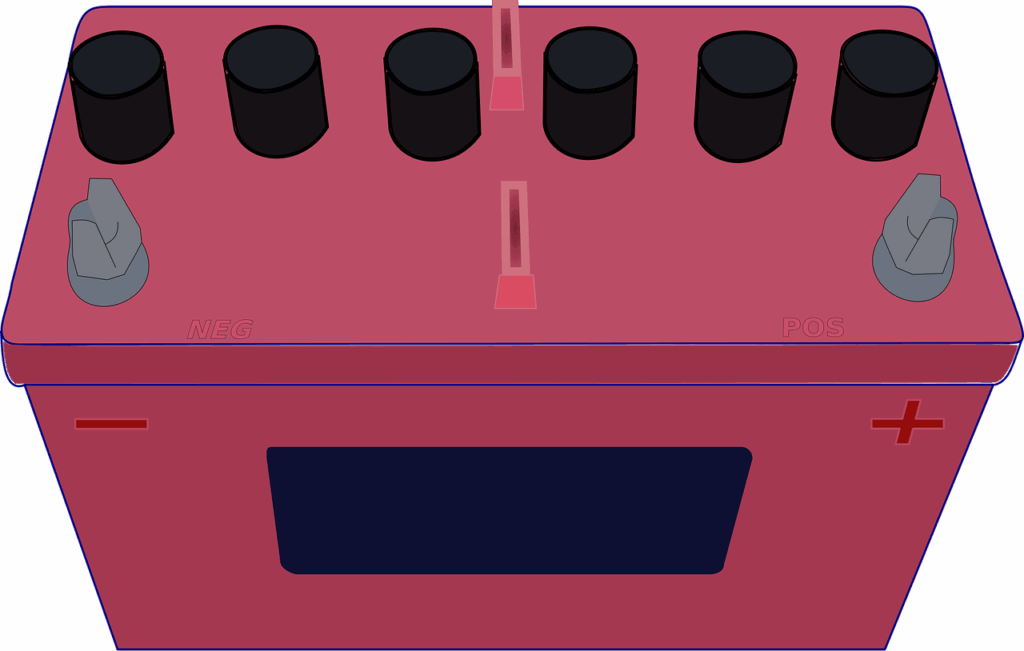
11. **Hybrid High-Voltage Battery Replacement**
Ranked as one of the single most expensive repairs according to RepairPal data, the replacement of a hybrid high-voltage battery can present a formidable financial challenge to vehicle owners. While the average cost can be around $6,645 to $6,719 for specific models like a 2022 Audi A4, other sources indicate a broader range from $4,489 to an astounding $17,657. This significant variance underscores the criticality of this component and its impact on the overall cost of ownership for hybrid and electric vehicles.
What drives this exceptionally high cost is primarily the nature of the part itself. According to RepairPal data, approximately 95% of the expense for replacing a high-voltage traction battery in a hybrid vehicle is attributed to the cost of the parts. These batteries are complex, technologically advanced units comprising numerous cells, sophisticated management systems, and often rare earth materials, all of which contribute to their manufacturing and, consequently, their replacement expense. This makes the part cost far outweigh the labor involved in installation.
For many hybrid and EV owners, the financial burden of battery replacement is mitigated by comprehensive warranties. Most electric vehicles and hybrids come equipped with a battery warranty that typically guarantees against malfunction or total failure, usually spanning 8 years or 100,000 miles. This warranty coverage is a crucial consideration for potential buyers, as it provides a significant safeguard against one of the most substantial potential repair costs associated with these advanced vehicles during their initial years of ownership.
While direct prevention of battery degradation can be challenging given its inherent lifespan, making informed purchase decisions can significantly reduce your risk. Prioritizing vehicles from reliable brands known for robust engineering and strong battery performance, coupled with a thorough understanding of the factory warranty terms, is paramount. For owners of older hybrid vehicles nearing the end of their warranty period, it becomes even more critical to budget for this potential expense or consider the vehicle’s resale value in light of an upcoming battery replacement.
Car Model Information: 2015 Audi A4 2.0T Premium
Name: Audi A4
Caption: Audi A4 (B9.5; facelift)
Manufacturer: Audi AG
Production: 1994–2025
Assembly: Germany,India,China,Indonesia,Ukraine
Class: Compact executive car
BodyStyle: Sedan (car)
Platform: Volkswagen Group B platform
Layout: Front-engine, front-wheel drive layout
Sp: uk
Predecessor: Audi 80
Successor: Audi A5#Third generation (2024)
Categories: 2000s cars, 2010s cars, 2020s cars, All-wheel-drive vehicles, All articles lacking reliable references
Summary: The Audi A4 is a line of luxury compact executive cars produced from 1994 to 2025 by the German car manufacturer Audi, a subsidiary of the Volkswagen Group. The A4 has been built in five generations and is based on the Volkswagen Group B platform. The first generation A4 succeeded the Audi 80. The automaker’s internal numbering treats the A4 as a continuation of the Audi 80 lineage, with the initial A4 designated as the B5-series, followed by the B6, B7, B8, and the B9.
The B8 and B9 versions of the A4 are built on the Volkswagen Group MLB platform shared with several models and brands across the Volkswagen Group. The Audi A4 automobile layout consists of a front-engine design, with transaxle-type transmissions mounted at the rear of the engine. The cars are front-wheel drive, or on some models, “quattro” all-wheel drive. The A4 is available as a sedan and station wagon. Historically, the second (B6) and third generations (B7) of the A4 also included a convertible version. For the B8 and B9 versions, the convertible, along with a new coupé and 5-door liftback variant, was spun-off by Audi into a new nameplate called the Audi A5.
The B9 generation A4 and A5 will be replaced by B10 version of A5, as part of Audi’s new naming convention.
Get more information about: Audi A4
Buying a high-performing used car >>>
Brand: Audi Model: A4
Price: $11,378 Mileage: 98,606 mi.
Read more about: Decoding Hybrid Reliability: The 11 Models You Should Approach with Caution Due to Premature Electrical and Battery Failures
12. **Cylinder Head Replacement**
Serving as a critical interface between the engine block and the valve train, the cylinder head is an intricate component responsible for sealing the combustion chambers and facilitating the intake and exhaust of gases. A failure in the cylinder head can lead to severe engine performance issues, and its replacement is a highly labor-intensive and costly repair, typically ranging from $3,575 to $3,928 according to RepairPal data. This expense places it firmly among the top high-cost automotive fixes.
Damage to the cylinder head can stem from various sources, including severe overheating, which can cause the metal to warp or crack. This warping compromises the seal with the engine block and can lead to coolant leaks into the combustion chambers or oil mixing with coolant, both of which are detrimental to engine health. Additionally, prolonged stress from engine misfires or poor maintenance can exacerbate wear on critical components within the head, such as valve seats and guides.
Replacing a cylinder head is not merely a matter of part cost, though the component itself can be expensive. The vast majority of the expense comes from the extensive labor involved. Accessing the cylinder head often requires dismantling a significant portion of the engine, including the intake manifold, exhaust manifold, timing components, and sometimes even the entire engine assembly. This intricate process demands highly skilled technicians and can take anywhere from several hours to multiple days, pushing labor costs substantially higher.
To minimize the risk of needing a cylinder head replacement, consistent and thorough preventative maintenance is non-negotiable. Regular oil changes, maintaining proper coolant levels, and promptly addressing any signs of engine overheating are paramount. Overheating is a primary culprit for cylinder head damage, so ensuring your cooling system is in top condition—including the radiator, hoses, and thermostat—is vital. Addressing minor engine issues as soon as they arise, such as persistent misfires, can also prevent them from cascading into more severe damage affecting the cylinder head and other internal engine components.
Read more about: 15 Classic Cars You Might Want To Skip: An Expert Guide for Discerning Collectors

13. **Transfer Case Replacement**
For vehicles equipped with all-wheel drive (AWD) or four-wheel drive (4WD) systems, the transfer case is a fundamental component that distributes power from the transmission to both the front and rear axles. Its proper functioning is essential for maintaining traction and stability, particularly in challenging driving conditions. When the transfer case experiences a failure, it can lead to significant drivability issues, and its replacement is an expensive proposition, with costs typically ranging from $2,911 to $3,035, and potentially as high as $7,714.
Symptoms of a failing transfer case can include unusual noises such as grinding, clunking, or whining, particularly when engaging AWD/4WD or during turns. Drivers might also notice a difficulty in shifting between 2WD and 4WD modes, or a feeling of shuddering or clunking during acceleration. These indicators suggest internal wear or damage to the gears, bearings, or chains within the transfer case. Ignoring these signs can lead to complete failure, potentially leaving your vehicle stranded or causing further damage to the drivetrain.
The high cost of transfer case replacement is attributable to both the specialized nature of the part and the labor involved. The transfer case itself is a robust assembly of gears, shafts, and chains, and its internal components are subject to significant stress. Additionally, accessing and replacing the unit often requires extensive labor, as it is typically situated deep within the vehicle’s undercarriage and integrated with other drivetrain components, demanding specialized tools and expertise.
Preventative maintenance for your transfer case primarily revolves around adhering to the manufacturer’s recommended fluid change schedule. The transfer case fluid lubricates and cools the internal gears and components, and clean, fresh fluid is critical for its longevity. Old or contaminated fluid can lead to excessive friction and heat, accelerating wear. Furthermore, avoiding aggressive driving habits, such as harsh accelerations or sudden engagements of 4WD, especially on dry pavement, can help reduce undue stress on the transfer case and extend its operational life.
Read more about: Mechanics’ Top Frustrations: 14 Bad Car Habits You Need to Stop Now to Save Money and Your Vehicle’s Life
14. **Head Gasket Replacement**
The head gasket, a seemingly unassuming component located between the engine block and the cylinder head, plays an absolutely vital role in your engine’s integrity. It seals the combustion chambers, preventing combustion gases from escaping and keeping engine oil and coolant from mixing. A failed head gasket can lead to severe engine damage, and its replacement is notoriously expensive, typically costing between $1,915 and $2,220, with some estimates reaching $3,456 to $5,459.
What makes head gasket replacement stand out as one of the costliest repairs is not the price of the part itself—a replacement head gasket can be purchased for as little as $15. Instead, the overwhelming majority of the expense stems from the labor involved. Mechanics often need anywhere from six hours to several days to replace a head gasket, a process that demands extensive engine disassembly. With labor rates ranging from $100 to $260 an hour, the cost to replace this relatively inexpensive part can quickly skyrocket, making it a significant financial undertaking.
Symptoms of a blown head gasket are often clear and shouldn’t be ignored. These include white smoke emanating from the exhaust pipe (indicating coolant burning), a milky discoloration in your engine oil (suggesting coolant mixing with oil), persistent engine overheating, or unexplained coolant loss. Any of these signs warrant immediate professional inspection, as continued driving with a failed head gasket can lead to catastrophic engine damage, potentially necessitating a full engine rebuild or replacement, which is even more expensive.
To prevent the devastating expense of a head gasket replacement, proactive vehicle care is paramount. Regular oil changes ensure proper lubrication and cooling, while diligently monitoring your coolant levels and addressing any leaks immediately are critical steps. Crucially, preventing your engine from overheating is the single most effective way to protect your head gasket, as excessive heat is a primary cause of gasket failure. Ensuring your cooling system components—radiator, water pump, thermostat, and hoses—are in excellent working order will significantly reduce this risk and safeguard your engine’s health.
### The Unseen Drivers of High Repair Costs: Beyond the Parts
While the specific components outlined above account for many hefty repair bills, it’s also crucial for consumers to understand the overarching factors that drive up car repair expenses. It’s not just the individual part that dictates the cost, but a complex interplay of vehicle characteristics, market dynamics, and labor expertise. Understanding these underlying elements can provide a more holistic view of why some repairs are so financially draining.
Luxury and imported vehicles, for instance, inherently command higher repair costs. As noted by Nick Zeman, shop manager at Fastlane Import Auto Repair, German brands often tend to be “over-engineered,” resulting in much more complex designs compared to simpler Japanese and Korean counterparts. This complexity translates directly into more expensive, specialized parts and intricate repair procedures. Furthermore, part availability plays a significant role; if components are rare or must be shipped internationally, prices can dramatically increase, adding both cost and inconvenient delays to the repair process.
Beyond parts, labor costs are a substantial factor, varying significantly by region and specific shop. Urban areas typically experience higher labor rates, and repairs demanding extensive time or highly specialized skills, such as internal engine work or intricate electrical diagnostics, naturally incur higher charges. The age and mileage of a vehicle are also critical determinants; older cars with higher mileage are statistically more prone to costly repairs. Moreover, what might begin as a simple issue can quickly escalate into extensive damage if left unaddressed, highlighting the importance of timely intervention.
### Proactive Strategies for Minimizing Your Automotive Maintenance Costs
Armed with knowledge about costly repairs and their underlying drivers, car owners can adopt a comprehensive approach to minimize their overall automotive maintenance expenses. The core principle is always prevention: routine maintenance is unequivocally cheaper than unexpected, major repairs. By integrating smart habits and making informed decisions, you can significantly reduce the likelihood of encountering those dreaded four- or five-figure repair bills.
First and foremost, **prioritize consistent preventative maintenance.** Your owner’s manual is an invaluable resource, providing a recommended maintenance schedule specific to your vehicle. This includes regular oil changes, fluid checks, tire rotations, and inspections of belts, hoses, and brakes. As demonstrated, timely oil changes are far less expensive than replacing a blown head gasket or cylinder head. Even simple acts like regular car washes can prevent rust and corrosion, safeguarding components like CV boots from premature wear and avoiding a $1,200 axle replacement.
When it comes to purchasing a vehicle, **make reliability a top criterion.** According to RepairPal, brands like Honda, Toyota, Mazda, and Hyundai are among the cheapest to maintain and repair, with average annual costs ranging from $428 to $468. Additionally, **seek out vehicles with long factory warranties.** These warranties, such as those offered by Hyundai and Mitsubishi, can provide essential financial protection against large repair bills during the initial years of ownership. Understanding the exclusions and limitations of any warranty is also crucial to avoid surprises.
Furthermore, **be financially prepared for the unexpected** and **make smart choices for repairs.** Having the right amount of insurance, particularly comprehensive coverage for unforeseen incidents like floods or collisions with wildlife, can prevent you from bearing 100% of the replacement cost. While not for everyone, **considering an extended warranty** can offer peace of mind, especially for older vehicles where repair costs tend to rise exponentially after five years. When a repair is necessary, **choosing a trusted, independent mechanic** who specializes in your car’s brand can often save you money compared to dealership rates. Exploring options for **OEM (Original Equipment Manufacturer) or quality used parts** for non-essential repairs can also significantly reduce expenses. Finally, for those with mechanical inclination, **tackling basic repairs yourself** (like air filter or spark plug replacement) can eliminate labor costs entirely.
### Driving Forward with Confidence: Your Vehicle, Your Control
Navigating the world of car ownership doesn’t have to be a journey fraught with financial anxiety, even with the specter of costly repairs lurking. The key takeaway from our in-depth exploration is clear: an informed, proactive approach empowers you to take control. By understanding the common culprits behind exorbitant repair bills, recognizing early warning signs, and committing to diligent maintenance, you’re not just saving money; you’re investing in the longevity and reliability of your vehicle.
Read more about: 15 Classic Cars You Might Want To Skip: An Expert Guide for Discerning Collectors
Choosing a reliable vehicle, scrutinizing warranties, and fostering a relationship with a trustworthy mechanic are all integral parts of this strategy. These aren’t just tips; they are actionable principles that transform car ownership from a potential money pit into a manageable asset. Remember, your car is an essential part of your daily life; treat it well, stay vigilant, and you’ll keep it running smoothly and efficiently for years to come, avoiding the most significant financial potholes on the road.

